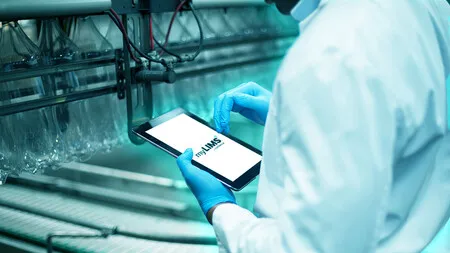June 3, 2024
EPA Measures Protect the Nation's Drinking Water
Table of Content

The U.S. Environmental Protection Agency (EPA) plays a pivotal role in ensuring the safety and accessibility of the nation’s drinking water. For laboratory professionals operating a Laboratory Information Management System (LIMS), understanding how EPA regulations intersect with laboratory operations can significantly enhance efficiency, streamline processes, and elevate quality standards in the water industry. This article delves into the critical aspects of the EPA’s efforts and how a LIMS can bolster these initiatives.
Establishing and Enforcing Water Quality Standards
The EPA sets regulatory limits for over 90 contaminants in drinking water through the Safe Drinking Water Act (SDWA). These standards protect public health by limiting harmful substances such as microorganisms, disinfectants, inorganic chemicals, and radionuclides. For laboratory professionals, a LIMS offers a robust platform for managing data related to these contaminants. By automating data entry, ensuring accuracy, and providing real-time monitoring, a LIMS enhances compliance with these stringent standards. Additionally, a LIMS supports the EPA's regular updates to these standards by integrating the latest scientific research, ensuring that labs can quickly adapt to new regulations.
Streamlined Monitoring and Reporting Requirements
Public water systems are mandated by the EPA to monitor water quality regularly and report findings to state agencies and the public. A LIMS significantly streamlines this process by automating data collection, analysis, and reporting. The system ensures that Consumer Confidence Reports (CCR) are generated accurately and efficiently, providing consumers with critical information about their drinking water. By maintaining comprehensive, accessible records, a LIMS facilitates transparency and rapid identification of potential issues, thereby enhancing public trust and the labs' operational efficiency.
Protecting Source Water
The EPA’s source water protection initiatives involve collaborating with states, tribes, and local communities to manage potential contamination sources. A LIMS enhances these efforts by providing a centralized platform for tracking water quality across various sources, from rivers and lakes to groundwater. This comprehensive data management allows laboratories to quickly identify and respond to contamination threats, supporting the development and implementation of effective source water protection plans. Programs like the Source Water Protection Program and the Wellhead Protection Program benefit from a LIMS capability to integrate and analyze diverse data sets, ensuring more informed decision-making.
Funding and Technical Assistance
The EPA’s Drinking Water State Revolving Fund (DWSRF) offers financial aid to improve water infrastructure and compliance. For laboratories, leveraging a LIMS can maximize the impact of these funds by enhancing operational efficiency and data accuracy. LIMS also plays a crucial role in technical assistance, providing water system operators with the tools needed to manage and maintain safe drinking water systems effectively. By centralizing data management and facilitating seamless communication, LIMS software supports the EPA’s goal of improving water infrastructure and health risk management.
Responding to Emergencies and Contaminant Outbreaks
In emergencies, such as natural disasters or industrial accidents, the EPA provides vital support to protect public health. LIMS software enhances emergency response capabilities by offering real-time data access and robust analytics. This allows laboratories to quickly identify contamination sources and coordinate with federal, state, and local agencies effectively. The EPA’s Water Security Division benefits from a Lab Information Management System's ability to ensure the resilience and recovery of water systems, providing a critical line of defense against contamination.
Driving Research and Innovation
The EPA’s research initiatives aim to advance understanding of drinking water contaminants and treatment technologies. A LIMS system supports this by facilitating comprehensive data collection and analysis, enabling laboratories to contribute to cutting-edge research. The system’s integration with the EPA’s Office of Research and Development ensures that laboratories are equipped with the latest scientific knowledge and innovative solutions for water quality management.
Public Education and Outreach
Educating the public on drinking water protection is integral to the EPA’s mission. A LIMS can aid in these efforts by ensuring accurate, accessible data for educational materials and outreach programs. By supporting transparency and public awareness, a LIMS empowers communities to take proactive steps in protecting their water sources.
Cybersecurity in Water Management
Recent cyber-attacks underscore the need for robust security measures to protect our water supply. A LIMS plays a critical role in safeguarding data with features like secure storage, monitoring, and automatic alerts. The EPA urges water administrators to:
- Minimize public-facing internet exposure.
- Conduct regular cybersecurity assessments.
- Change default passwords immediately.
- Inventory OT/IT assets.
- Develop and test cybersecurity incident response plans.
- Backup OT/IT systems regularly.
- Conduct cybersecurity awareness training.
Conclusion
The EPA’s comprehensive approach to drinking water protection is vital for public health and environmental sustainability. For water quality laboratory professionals, leveraging LIMS software can significantly enhance efficiency, streamline operations, and improve quality standards. By aligning laboratory practices with EPA initiatives, a LIMS ensures that all Americans have access to safe and clean drinking water. In the face of increasing cyber threats, the importance of diligent and secure data management should be a central part of your laboratory’s operation.
Best-in-class LIMS
Built for your success
See what makes Confience different. Speak with a member of our team.
Schedule a Demo







